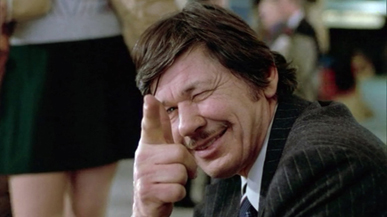|
|
Viking Night: Death WishBy Bruce HallFebruary 12, 2013
While the Kerseys were on vacation, the crime rate in New York seems to have tripled. Dozens of people a week are being slaughtered by vicious street gangs that look fresh off a Mad Max casting call. It’s a little over the top, and in fact a brief, expository conversation near the top of the film is one of the last times you'll see Death Wish attempt to legitimately address the real world underpinnings of its plot. Unlike his coworkers, Paul is portrayed as a closet liberal who pities the less fortunate and tries his best to understand the root causes behind crime. His beliefs are tested when his wife and daughter (Kathleen Tolan) are the victims of a home invasion, led by someone who looks an awful lot like Jeff Goldblum. When he arrives at the hospital with his son-in-law (Steven Keats), Paul discovers that his wife is dead and his daughter has been the victim of a horrifying sexual assault. He struggles to find justice through conventional means, but there's only so much ground the police can cover in a city of millions. Meanwhile, his daughter remains badly traumatized and his home feels like a tomb without the woman he loves. He buries himself in his work. Then, on a business trip to Arizona, he spends some quality time with a client who happens to be a gun nut enthusiast. They have a Red State moment, during which Paul discovers some of the many explosive options available to those who wish to solve their problems through unconventional means. Suddenly, it turns out all that pansy liberal talk was a smokescreen. Just like that, Paul Kersey turns out to be a murder machine who can put a bullet up a June bug’s ass at 300 yards. He acquires a gleaming new hand cannon, which he casually carries through airport security because it's 1974. The film largely abandons objectivity to take up a darker, more controversial posture.
|

|
|
|

|
Friday, November 1, 2024
© 2024 Box Office Prophets, a division of One Of Us, Inc.


